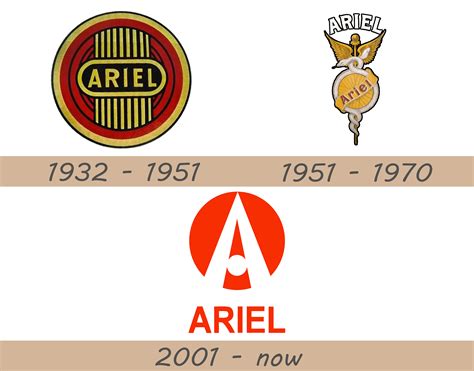Discover the company’s history, innovation, global impact, and future plans. Learn about its foundation, early models, WWII impact, expansion, and recent developments.
Foundation of the Company
Contents
Audi is a well-known German automobile manufacturer that has a rich and interesting history. The company was founded in 1910 by August Horch, who was previously involved in a different automobile company. With the help of financial backing from wealthy businessman Jörg Wizemann, Horch established Audi Automobilwerke GmbH Zwickau, a company that would soon become a major player in the automotive industry.
After a trademark dispute with his former company, August Horch was forced to come up with a new name for his business. It was his son who suggested the name Audi, which is the Latin translation of Horch. This change led to the birth of the Audi brand and logo, which features four interlocking rings that represent the merger of four automotive companies: Audi, DKW, Horch, and Wanderer.
From its very foundation, Audi was committed to innovation and excellence in engineering. The company’s early models were known for their high quality and performance, setting the stage for the success that Audi would achieve in the years to come. The foundation of the company laid the groundwork for the impressive legacy that Audi continues to build upon today.
Early Innovations and Models
One of the early innovations of Audi Car Company was the introduction of the first left-hand drive car in Germany in 1921. This was a significant innovation at the time, as it allowed for easier driving and better visibility, especially on the expanding road network in Europe. This innovation set the stage for Audi to become a leader in automotive engineering and design.
In the 1930s, Audi introduced a series of models that were designed for both performance and luxury. These models featured powerful engines and luxurious interiors, setting a new standard for automotive excellence. One of the most notable models of this era was the Audi Front 225, which combined cutting-edge technology with elegant design.
Audi’s commitment to innovation continued after World War II, with the development of the Audi 100 in the 1960s. This model was a breakthrough in automotive engineering, featuring a lightweight body and advanced suspension system. The Audi 100 set the standard for modern sedan design and performance, and its success laid the groundwork for Audi’s future models.
Throughout its history, Audi has been at the forefront of automotive innovation, introducing new technologies and design concepts that have redefined the industry. From the first left-hand drive car to the groundbreaking Audi 100, the early innovations and models of Audi have cemented its reputation as a pioneer in the automotive world.
Impact of World War II
During World War II, the Audi car company faced a significant impact as the production and resources were directed towards the war efforts. The company had to shift its focus from manufacturing automobiles to producing military vehicles and weaponry for the war. This led to a halt in their car production and a shift in their operations to support the war demands.
As the war continued, the company faced challenges with the shortage of materials and resources needed for car production. The aftermath of the war also brought about economic instability, making it difficult for the company to resume its normal operations. The war had taken a toll on the infrastructure and workforce, further impacting the production capabilities of the company.
Despite the challenges faced during the war, Audi managed to adapt and innovate to overcome the obstacles. The experience gained from producing military vehicles enabled the company to explore new technologies and advancements in car manufacturing, setting the stage for the future growth and development of the company.
After World War II, Audi resumed its automobile production and began recovering from the setbacks caused by the war. The company utilized its expertise in engineering and innovation to introduce new models and designs, marking a turning point in its history. The impact of World War II ultimately shaped the resilience and determination of Audi as it rebounded from the challenges and paved the way for its future success.
Expansion and Global Presence
Audi Car Company’s Expansion and Global Presence
With the success of its early innovations and models, Audi expanded its global presence in the late 20th century. The company focused on establishing a strong foothold in key markets around the world, including the United States, China, and India. This expansion was driven by a strategic approach to marketing and distribution, as well as the introduction of new models tailored to the preferences of international consumers.
As part of its global expansion, Audi also invested in the development of cutting-edge production facilities in emerging markets, further solidifying its presence in regions with high growth potential. This approach not only allowed the company to capitalize on new opportunities but also strategically positioned Audi to compete with other major players in the global automotive industry.
One of the key strategies behind Audi’s global expansion was the establishment of a strong network of dealerships and service centers in key locations. This allowed the company to provide exceptional customer service and support, further enhancing its reputation and market presence in various regions around the world.
Looking ahead, Audi continues to focus on strengthening its global presence, with an emphasis on leveraging digital technologies and sustainable business practices to ensure its long-term success in an increasingly competitive and dynamic global market.
Recent Developments and Future Plans
Recent Developments in Audi can be summarized as the company’s focus on innovation and sustainability. In recent years, Audi has been investing heavily in electric and autonomous vehicles, striving to stay at the forefront of technological advancements in the automotive industry.
The company announced its plans to launch several electric vehicle models in the coming years, aiming to compete with other major players in the electric car market. This demonstrates Audi‘s commitment to keeping up with the evolving consumer demands and environmental standards.
In addition to electric vehicles, Audi has also been investing in connectivity and digitalization, with the goal of enhancing the overall driving experience for its customers. This includes the development of advanced driver assistance systems and the integration of cutting-edge technologies into its vehicles.
Looking into the future, Audi aims to further expand its presence in the global market, with a focus on emerging economies and new customer segments. The company also plans to continue its efforts towards sustainability and environmental responsibility, with the goal of reducing the carbon footprint of its operations and products.












